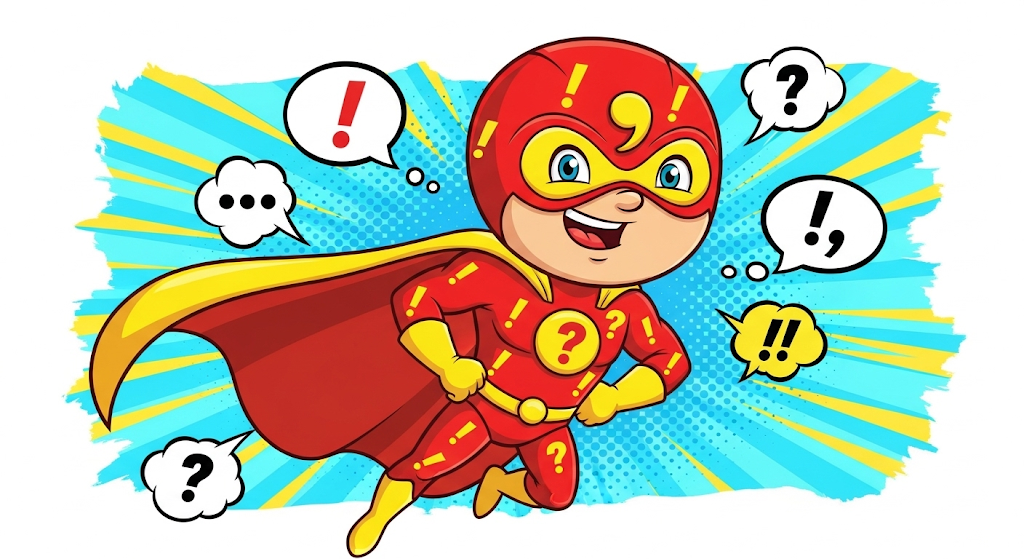Punctuation Basics
Learn and practice basic punctuation rules.

Punctuation Superheroes!
Learn the rules and practice your skills.
. Period
Learn
A period (or full stop) is used to end a declarative sentence (a statement).
Example:
I will finish this sentence with a period.
Practice
1. Add the correct punctuation:
2. Add the correct punctuation:
3. Add the correct punctuation:
? Question Mark
Learn
A question mark is used at the end of a sentence that asks a direct question.
Example:
How do you know this is a question?
Practice
1. Rewrite as a question:
2. Rewrite as a question:
3. Rewrite as a question:
! Exclamation Mark
Learn
An exclamation mark shows excitement, surprise, or other strong feelings.
Example:
Wow! This looks great!
Practice
1. Add punctuation to show excitement:
2. Add punctuation to show excitement:
3. Add punctuation to show surprise:
, Comma
Learn
-
Use a comma to separate items in a list.
Example: She speaks English, Thai, and Spanish.
-
Use a comma to separate different ideas in a sentence.
Example: This shirt is old, but it's comfortable.
-
Use a comma to set off a direct quote.
Example: Aomsin said, "Bam likes hanging out with her boyfriend".
Practice
1. Add commas to separate the items in this list:
2. Add a comma to separate the clauses:
3. Add commas to separate the names:
“ ” Quotation Marks
Learn
Quotation marks are used to show the exact words that someone said or wrote (a direct quote).
Example:
"Your presence can give happiness," he said.
Practice
1. Add quotation marks around what the teacher said:
2. Add quotation marks around the question:
3. Add quotation marks around the exclamation:
; Semicolon
Learn
-
Use a semicolon to join two closely related independent clauses.
Example: The sun was setting; it was beautiful.
-
Use a semicolon before a conjunctive adverb (like however, therefore, also, or consequently) that connects two independent clauses. A comma usually follows the adverb.
Example: I needed to go for a walk; also, I needed to buy milk.
Practice
1. Join with a semicolon:
2. Join with a semicolon and "however":
3. Join with a semicolon and "therefore":



